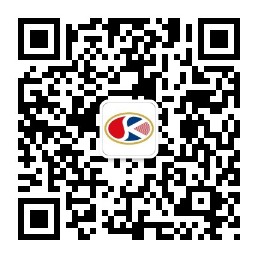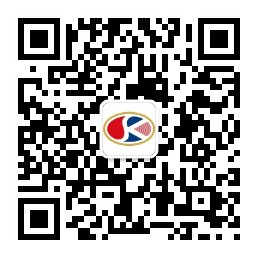News Updates
NEWS CENTER
What materials should be submitted with an invention or utility model patent application?
Release Time:
2020-04-01
(1) Letter of Request
The request shall state the name of the invention or utility model, the name of the inventor, the name or name and address of the applicant, and other matters.
(2) Abstract of the specification
The abstract of the specification shall state a summary of the content disclosed in the patent application for the invention or utility model, i.e., the name of the invention or utility model and the technical field to which it belongs, and clearly reflect the technical problem to be solved, the main points of the technical program to solve the problem, and the main use.
The summary of the specification may contain the chemical formula that best describes the invention, and the text portion of the summary shall not exceed 300 words. No commercial publicity terms shall be used in the abstract.
(3) Abstract with drawings
Patent applications with drawings should provide a picture that best describes the technical characteristics of the invention or utility model. The size and clarity of the accompanying drawings should ensure that when the drawings are reduced to 4cm x 6cm, the details in the drawings can still be clearly distinguished.
At present, the invention patent may omit the abstract drawings, and only designate the drawings in the specification as the abstract drawings in the request.
(4) Claims
Claims should be based on the specification, and clearly and briefly limit the scope of the claimed patent protection.
(5) Specification
The specification shall provide a clear and complete description of the invention or utility model, subject to the realization of technical personnel in the technical field. The specification shall include the following contents:
(5.1) Name of the invention (or utility model)
The name shall reflect the subject matter and type (product or method) of the invention in a simple and clear manner, and conform as far as possible to the classification position of the International Patent Classification List, and reflect as far as possible the use or field of application of the invention. The number of words in the name should generally not exceed 25 words, and no ambiguous words should be used.
(5.2) Technical Field
Technical field refers to the type of technical field to which the invention or utility model belongs, not what the invention itself is, and should briefly state the technical field to which the invention directly belongs or to which it is directly applied. As far as possible, it should conform to the corresponding (lowest) classification position in the International Classification List. (For example, a switching diode invention may be written as "The present invention belongs to a semiconductor device" rather than "The present invention belongs to an electronic device".)
(5.3) Background technology
Background technology refers to at least one comparative document that is most relevant to the present invention (i.e., with the highest coefficient of relevance for use, solution, technical substance, and effect of use, etc.) that is searched through domestic and foreign literature. When describing the background technology, the comparative documents shall be specifically cited, the source and the source shall be indicated, and their contents shall be analyzed according to the three elements of purpose, composition and effect, the necessary technical features shall be described, the problems and shortcomings shall be pointed out, and the reasons shall be stated under possible conditions, as well as the difficulties that have been encountered by the later generations in solving these problems.
(5.4) Contents of the invention or utility model
(5.4.1) Technical problem to be solved (i.e. "purpose of the invention")
The technical problem to be solved refers to the specific technical problem that the invention can solve and the result that has been accomplished in view of the problems and deficiencies in the background technology, and any result that can not be achieved in practice cannot be regarded as the purpose of the invention. The description of the purpose of the invention should be concise, reflecting the type of the invention (product or method) and its difference from the background technology. Describe the problem to be solved by the invention and its field of application.
The technical problem to be solved by the invention or utility model should be written in accordance with the following requirements:
In view of the defects and deficiencies in the prior art, reflect the technical problems to be solved by the invention or utility model objectively and substantively in positive and as concise language as possible, and also illustrate its technical effects (advertisement-type publicity terms are not allowed in this part of the description).
(5.4.2) Technical Program
The core of a patent application is the technical program disclosed in the specification. The technical program refers to the technical measures (i.e., technical conception, technical scheme) adopted to achieve the above-mentioned purpose of the invention. The technical features (e.g., construction, organization, shape, etc.) as well as the functions and principles of the invention should be clearly and completely described, and disclosed to the extent that it enables a person of ordinary skill in the art to carry out the invention.
Describing the technical program, different types of inventions have different ways of description. For example:
Device invention: the structure of its parts and components and their connection relationship should be specified (with accompanying drawings if necessary);
Method invention: the process method, process flow and conditions (e.g. time, pressure, temperature, concentration) that must be realized to achieve the purpose of the invention should be described;
Combination or mixture invention: its composition and content should be described. When describing the composition and content, provide, as far as possible, a range of values or options, and state the basis or reasons for determining the range. When expressed as a percentage, the sum of the contents of each component shall be equal to 100% (the sum of the lower limit of any one item and the upper limit of the remaining items ≥ 100, and the sum of the upper limit of any one item and the lower limit of the remaining items ≤ 100).
(5.4.3) Beneficial effect
The effect of the invention is the result of comparison with the background technology. The advantages and/or positive effects of the invention compared with the background technology should be clearly and substantively stated. For example, the improvement of yield, quality, precision, efficiency, etc., the saving of energy and raw materials, the eradication or prevention of environmental pollution, and so on.
To describe the effects of the invention, try to quantify them as much as possible, and if you can't quantify them, you can describe them by analyzing the structural features and theoretical explanations, and don't use advertising language as much as possible.
(5.4.4) Description of accompanying drawings
Attached drawings that can fully reflect the technical features of the invention should be provided (attached drawings include parts drawings, assembly drawings, circuit diagrams, wiring diagrams, flowcharts, block diagrams, curve diagrams, shape diagrams, etc., which can be selected as appropriate). The main parts should be labeled in order (generally numbered with Arabic numerals). The accompanying drawings are schematic diagrams, do not need to mark the size and process requirements. In addition to block diagrams, flow charts, diagrams should generally not be labeled with Chinese characters. Attachment drawings should be a brief description of its number and name.
(5.4.5) Specific embodiments
The embodiment is a further description of the invention, and is a concretization of the technical solution of the invention (part 5.4.2), and in many cases this part is repeated with part 5.4.2, but the embodiment is more detailed. At least one example of an embodiment of the invention should be provided. The embodiment should describe in detail and concretely all the necessary conditions required by a person of ordinary skill in the art to carry out and reproduce the present invention, such as parameters, materials, equipment, tools, etc., as well as the necessary specifications, models, and, if a new substance is used therein or if the material is prepared by oneself, the method of manufacture thereof. In describing the specific structure, the components shall be labeled with markings consistent with the accompanying drawings.
Source: China Intellectual Property Rights Defense Assistance Network
More intellectual property related issues, welcome your scan code consultation! Have questions must answer yo ~ Deep credible is willing to use professional and focus, to provide you with high-quality and efficient intellectual property agency services!

More information and services
The official subscription number of "Deep Trusted Intellectual Property Rights" on the code

More deeply trusted dynamic news, important data/reports, authorized cases, etc
Code on the concern [deep trusted intellectual property service platform] official service number

相关新闻
Telephone:
Telephone:+86-755-82566227、82566717、13751089600
Head Office:13 / F, Building 14, Longhua Science and Technology Innovation Center (Mission Hills), No. 8 Golf Avenue, Guanlan Street, Longhua District, Shenzhen
Head Office:
13 / F, Building 14, Longhua Science and Technology Innovation Center (Mission Hills), No. 8 Golf Avenue, Guanlan Street, Longhua District, Shenzhen
Subsidiary Company:2808, Block B2, Yuexiu Xinghui Junbo, No.18 Tazihu East Road, Jiangan District, Wuhan City, Hubei Province
Subsidiary Company:
2808, Block B2, Yuexiu Xinghui Junbo, No.18 Tazihu East Road, Jiangan District, Wuhan City, Hubei Province

Service Number

Subscription Number
Copyright ©2016 Shenzhen Shenkexin patent Agency Co., LTD All rights reserved | 粤ICP备2021174526号
Copyright ©2016 深圳市深可信专利代理有限公司 版权所有 | 粤ICP备2021174526号 SEO标签
Copyright ©2016 深圳市深可信专利代理有限公司 版权所有